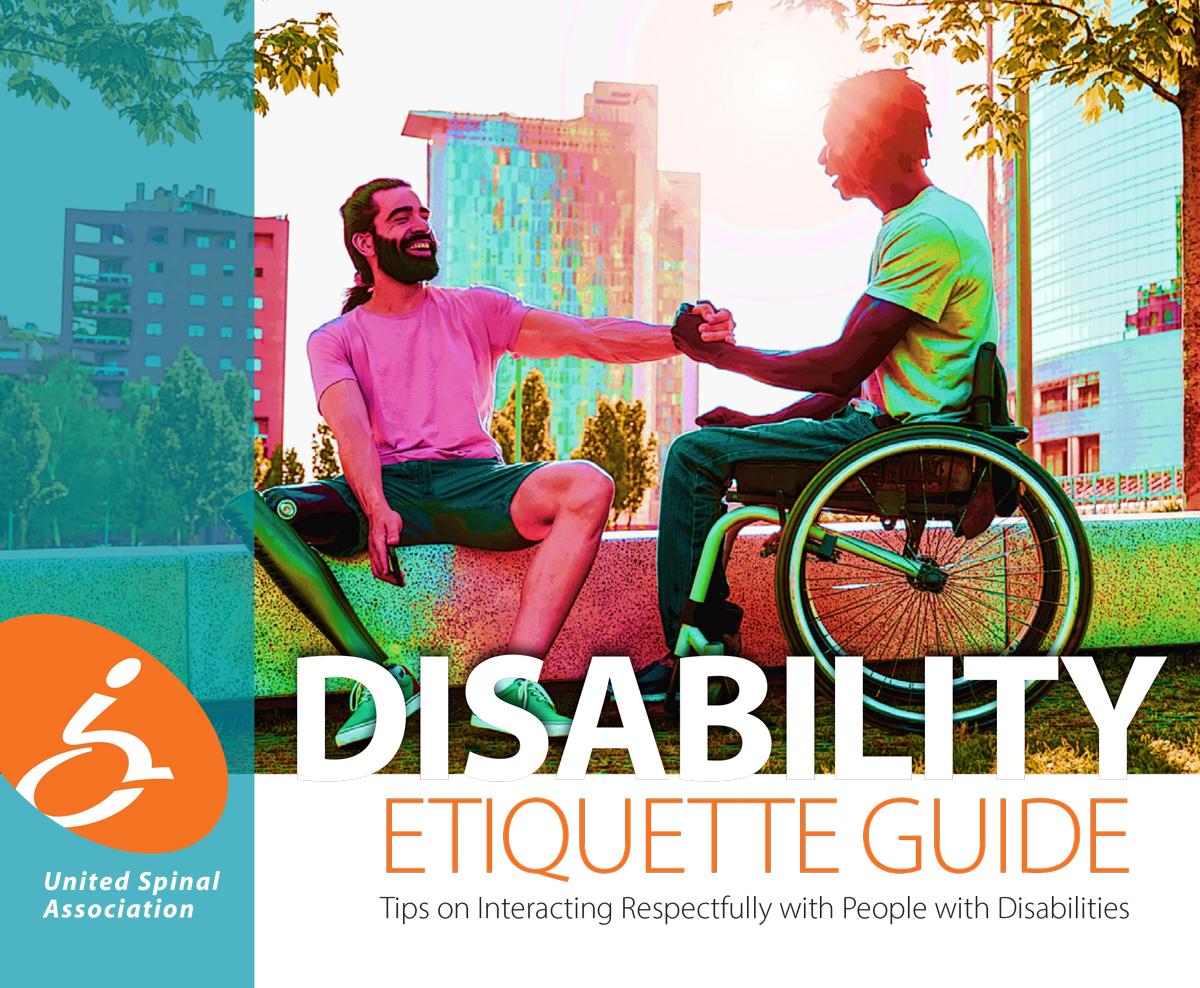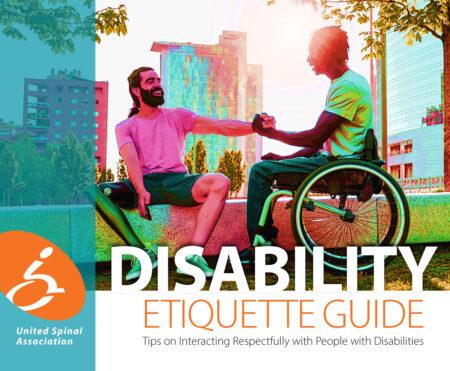Disability Etiquette Guide
Tips on Interacting Respectfully with People with Disabilities
Download Your Copy!
A great resource for businesses, schools, organizations, staff training and disability awareness programs. You don’t have to feel awkward when interacting with, or when you meet, a person who has a disability. This 20-page guide provides tips for you to follow that will help create positive interactions and raise everyone’s comfort levels. For purchasing information, email Senior Communications Director Josie Byzek at JByzek@Unitedspinal.org.
Why Practice Disability Etiquette?
Up to one in four Americans live with a disability that affects their daily life. By following a few simple guidelines, we can all help to make their lives easier and more fulfilling. In addition to our Disability Etiquette Guide available above, United Spinal lists the Top 10 Tips of Disability Etiquette below. When we understand and respect the needs of people with disabilities, we create a more inclusive and welcoming society for everyone.
United Spinal's Top Ten Disability Etiquette Tips
1. Ask before you help. If you offer and the person with a disability accepts, follow their instructions. They know their capabilities.
2. Do not touch, pat or grab. No one wants to be touched without consent, including people with disabilities. Do not touch, grab, or guide them or their wheelchair, scooter or cane without permission.
3. Speak directly to the person with a disability. Also, remember that most people, including those with disabilities, would rather not discuss their bodies or medical history with people they just met.
4. Avoid making assumptions. People with disabilities are the best judge of what they can or cannot do.
5. Be open to requests for access or accommodation. Ensuring your business is accessible and committing to reasonable accommodations upon request showcases excellent customer service and dedication to all members of your community.
6. Use respectful, person-first language. Avoid saying handicapped or wheelchair bound. Instead, say person with a disability or wheelchair user.
7. Provide a clear path of travel. Ensure there are no obstacles that could hinder or trip people with physical disabilities or visual impairments.
8. Welcome service animals. By law, service or support animals can accompany their handlers anywhere they go. If the animals are not well-behaved and harnessed, leashed, or tethered, you may ask the owner to remove them.
9. Remember, some disabilities are invisible. People with autism or intellectual disabilities may process information differently than you do, so be patient and understanding when communicating with them.
10. Be respectful. People with disabilities are individuals with families, jobs, hobbies, likes and dislikes, and problems and joys. While their disability is integral to their identity, it does not define them. Don’t make them into heroes or victims.
Download Your Copy!
Download the complete 20-page Disability Etiquette Guide for free! This recently updated pdf covers physical, sensory, neurodivergent, and intellectual disabilities and a variety of settings where its tips about equitable behavior make a difference.


